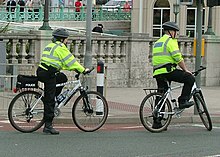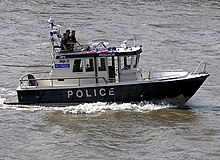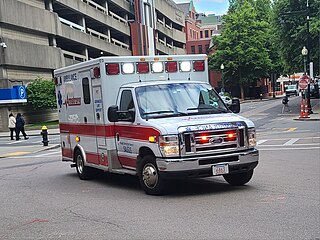
An ambulance is a medically-equipped vehicle used to transport patients to treatment facilities, such as hospitals. Typically, out-of-hospital medical care is provided to the patient during the transport. Ambulances are used to respond to medical emergencies by emergency medical services (EMS), and can rapidly transport paramedics and other first responders, carry equipment for administering emergency care, and transport patients to hospital or other definitive care. Most ambulances use a design based on vans or pickup trucks, though others take the form of motorcycles, buses, limousines, aircraft and boats.

An emergency vehicle is a vehicle used by emergency services. Emergency vehicles typically have specialized emergency lighting and vehicle equipment that allow emergency services to reach calls for service in a timely manner, transport equipment and resources, or perform their tasks efficiently. Emergency vehicles are usually operated by authorized government agencies, but some may also be operated by private entities where permitted by law.

The Mersey Tunnels Police is a small, specialised, non-Home Office police force that provides policing services for the Mersey Tunnels in Merseyside, England. The force, which comprises fifty one officers from Constable to Chief Police Officer is responsible for effective road policing of the Mersey Tunnels, Approach Roads and Exit Roads. It is privately funded by Merseytravel which in turn reports to the Liverpool City Region Combined Authority.

A police car is a ground vehicle used by police and law enforcement for transportation during patrols and responses to calls for service. A type of emergency vehicle, police cars are used by police officers to patrol a beat, quickly reach incident scenes, and transport and temporarily detain suspects, all while establishing a police presence and providing visible crime deterrence.
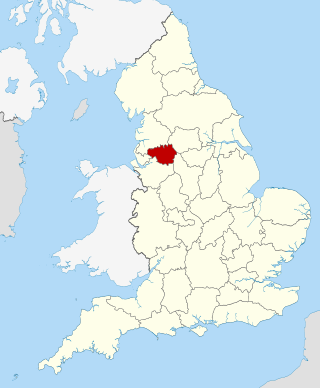
Greater Manchester Police (GMP) is the territorial police force responsible for law enforcement within the metropolitan county of Greater Manchester in North West England.
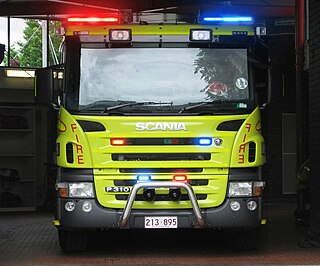
Emergency vehicle lighting, also known as simply emergency lighting or emergency lights, is a type of vehicle lighting used to visually announce a vehicle's presence to other road users. A sub-type of emergency vehicle equipment, emergency vehicle lighting is generally used by emergency vehicles and other authorized vehicles in a variety of colors.

Emergency vehicle equipment is any equipment fitted to, or carried by, an emergency vehicle, other than the equipment that a standard non-emergency vehicle is fitted with.

Sussex Police are the territorial police force responsible for policing in the whole of Sussex. Their jurisdiction covers the ceremonial counties of East Sussex and West Sussex. Their headquarters are in Malling House, Lewes, East Sussex.
The Traffic Operational Command Unit (OCU), formally known as CO15, was the Road Policing Unit for the Metropolitan Police Service in Greater London, England.
Police uniforms and equipment in the United Kingdom vary enormously per force or service, and different uniforms and equipment is used for different situations. Both what is worn and what is carried have varied considerably from the inception of the earliest recognisable mainstream police services in the early 19th century. As various laws in the mid-19th century standardised policing in the United Kingdom, so too were uniforms and equipment. From a variety of home grown uniforms, bicycles, swords and pistols the British police force evolved in look and equipment through the long coats and top hat, to the recognisable modern uniform of a white shirt, black tie, reflective jackets, body armour, and the battenburg-marked vehicles, to the present-day Airwave Solutions radios, electric vehicles and tasers.
The following outline is provided as an overview of and topical guide to transport:
A roads policing unit (RPU), or a similarly named unit in some forces, is the specialist road traffic police unit of a British police force.
Police aviation in United Kingdom provides British police forces with an aerial support unit to assist them in pursuit, surveillance and tracking. All police aviation in England and Wales comes under the National Police Air Service (NPAS), while Police Scotland and the Police Service of Northern Ireland operate independent units.

The Los Angeles Police Department (LAPD), the primary law enforcement agency of Los Angeles, California, United States, maintains and uses a variety of resources that allow its officers to effectively perform their duties. The LAPD's organization is complex with the department divided into bureaus and offices that oversee functions and manage specialized units. The LAPD's resources include the department's divisions, transportation, communications, and technology.

National Highways traffic officers, previously Highways Agency traffic officer (HATO), are employed by the National Highways.

Police transport refers to any form of transportation used by police in their duties. These primarily include methods for patrol and prisoner transport.

North West Air Ambulance is the helicopter emergency medical service (HEMS) that covers the North West England region, consisting of the counties of Cheshire, Cumbria, Lancashire, Greater Manchester and Merseyside.
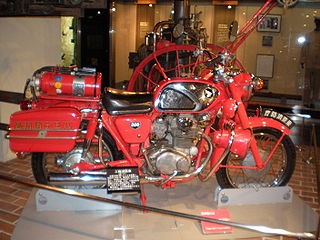
A fire motorcycle is a specialist motorcycle modified for use by a fire brigade or fire department. Several countries around the world use fire vehicles based on a motorcycle, often for rapid intervention to beat traffic congestion. The equipment carried ranges from simple extinguishers to jet guns with hose rigs. Firefighters may also use fire motorcycles to offer medical first aid treatment. In the United Kingdom, fire motorcycles are used by some fire services for road safety awareness campaigns.

The Air Wing is the police aviation unit of Victoria Police that operates in metropolitan Melbourne and provides a service to the whole of Victoria.





